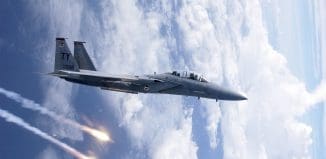US Air Force Drone Crashes In California
This post is also available in:  עברית (Hebrew)
עברית (Hebrew)
The US is investigating the crash of a X-56A unmanned air vehicle (UAV) shortly after take-off from the Edwards Air Force Base (AFB) in California.
Airforce Technology reports that the mishap that occurred on 19 November on Rogers Dry Lakebed test range caused severe damage to the UAV but no injuries or property damage were reported.
Edwards AFB said in a release that an accident investigation team has been established to ‘investigate what occurred, identify lessons learned and determine how to move forward’.
Built by Lockheed Martin Skunk Works, the X-56A is an experimental unmanned multi-utility technology test-bed (Mutt) designed to demonstrate active flutter suppression and gust load alleviation in flight.
X-56A is part of the Air Force Research Laboratory (AFRL)-sponsored Multi-Utility Aeroelastic Demonstrator (MAD) programme.
Nasa is using the Mutt to find breakthroughs in aeroservoelastic control technology, which involves the interaction of an airplane’s automatic flight controls with the response of non-rigid structures to aerodynamic forces.
The modular UAV is meant to demonstrate that onboard instrumentation can not only accurately predict and sense the onset of wing flutter, but also be used by the control system to actively suppress aeroelastic instabilities.
Powered by two small 40 kgs thrust JetCat P400 turbojet engines, the Mutt is 2 meters long, and has a wingspan of 8 meters.
Lockheed Martin built two X-56A UAVs for AFRL. The first UAV, named Fido, performed flight tests from 2013 to early 2014. The second airframe, Buckeye, was delivered in June 2014, and flights tests were undertaken earlier this year.
Though the Edwards AFB did not specify which of the two aircraft has crashed, it said that the UAV previously made 16 successful flights spending approximately six hours in the air.



























